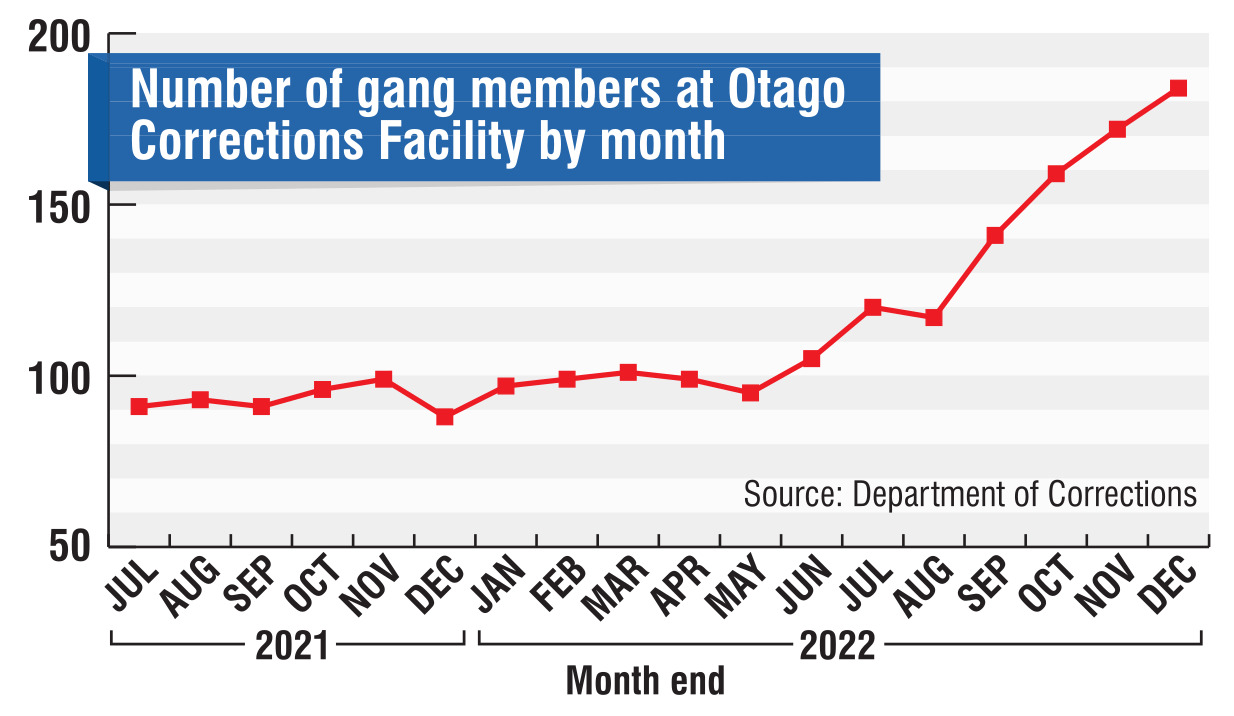
The Department of Corrections revealed last week the capacity of the Otago Corrections Facility had been expanded by 102 beds, largely made up of 87 new high-security beds added in the past six months.
Corrections Association of New Zealand (Canz) vice-president Paul Dennehy said when the prison opened in 2007 it was a low-security, campus-style facility and one of four new prisons built across the country at the time.
The current prison was worlds apart from how it was originally envisioned, Mr Dennehy said.
"Over the years, it’s developed and morphed into what is now going to house the majority, if not all, of the high-security prisoners within the South Island," Mr Dennehy said.
A Corrections spokeswoman said the changes brought the capacity of the site to 556 beds, though at present there were 434 inmates at the site.

Although the overall prison muster was decreasing, those jailed were now more hardened and willing to use violence, Mr Dennehy said.
There had been an uptick in assaults, including on staff at Milburn prison.
He believed Corrections had failed to put money into maintaining deteriorating facilities.
"I think it really came to a point where there was no real plan B."
Violence had a huge impact on Corrections officers, and morale and staffing numbers were down across the country, including at Milburn prison, he said.
The union had been consulted on the addition of the beds and had demanded appropriate staffing and bolstered infrastructure.
"The green and pleasant land that was, is now replaced by concrete and metalwork."
There was a lot of concern around how prisoners would behave when they were first moved south, as some responded to the shift with violence, Mr Dennehy said.
Stretched staffing impacted the job satisfaction of correctional officers and their ability to build relationships with prisoners — which could be as simple as asking them if they wanted a cup of tea and a sandwich after being transferred from another site.
"Some of the sites they come from, they’re not used to staff engaging them in that sort of conversational tone," he said.
Otago Corrections Facility prison director Dave Miller said the number of high-security beds at Milburn increased from 270 to 357 about six months ago, following the closure of the Matai, Kauri and Rāwhiti high-security units at Christchurch Men’s Prison.
The Canterbury units were more than 100 years old and no longer able to safely meet the needs of prisoners and staff, Mr Miller said.
Construction work had been done at Milburn to install additional security features and new rosters were put in place with additional staff rostered on.
Not all of the new high-security beds were in use and the site now had a capacity of 556 beds.
Many prisoners could behave unpredictably and act without warning, but assaults on staff were "totally unacceptable" and none would be tolerated.
Nationally, over 80% of prisoners had convictions for violence and 35% were gang-affiliated, which was a known predictor of violence, he said.
"The reality is the threat of violence is something we cannot eliminate entirely, but we are constantly working to ensure our prisons provide the safest environment possible for staff and prisoners," Mr Miller said.
Prisoners perpetrating assaults could face misconduct charges, a change in security classification or referral to police, he said.













